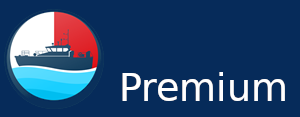In the last couple of years several paid as well as free tools have made it easier than ever to access vessels on a map. Although vessels shown on a map have their place, authorities and industry are understanding the greater potential and value of the underlying AIS data.
The volume of AIS data available for collection continues to grow with the expansion of both satellite AIS and terrestrial AIS networks. Today, more than 250,000 vessels are equipped with AIS transponders and being tracked in real-time. Each vessel transmits both static information (e.g. vessel name, MMSI, dimensions, etc) and dynamic information (e.g. location, speed over ground, heading, etc), providing a rich dataset from which sophisticated analytics can be extracted. There is significant value in displaying this vessel information on a map and providing skilled operators with situational awareness. However, much additional value can be extracted from the data if it is stored and structured appropriately. Tools for automating this data analysis are available, and the resulting information can be disseminated via standardized APIs.
Structuring and Storage of Data
The structuring and storage of data is critical to support analytics. GateHouse Maritime is continuously evaluating its temporal-spatial database structure and incorporating the latest GIS database tools to support the reliable and efficient creation of valuable information from either live or historical AIS data.
User-Defined Analytic Reports
One of the biggest challenges today is an overflow of data and information, which targeted analytic reports is a way to mitigate. Actionable information is user-driven, meaning that each user may require different information parsed from the same data. Information that is valuable to one user, may have limited or no value to another user. As an example, in the same geographic area:
An authority may want to receive an automatically generated message if a tugboat transits an environmentally sensitive area.
A tugboat operations group may be interested in the speed of the tugboat for a set period to ensure that it is operating at the most efficient speed to conserve fuel or minimize pollution.
A tugboat accounting group may only want to know each tugboat’s location at a specified time to confirm billing for a job.
A pilot may need a precise estimated time of arrival (ETA) of the tugboat to a meeting location.
It is important that the analytics solution is easily configurable so that the user can define exactly what information is of importance to them.
Configurable and Easily Integrated into Any Maritime Operation
GateHouse Maritime’s solution can be configured to provide information parsed from AIS to support operations in:
Logistics
Regulatory monitoring
Search and Rescue
Statistical analysis of waterways performance
Fisheries monitoring
Commodity movements supporting investment strategies
Dispatch
Billing
Deployment of standalone systems has become less and less desirable for both small and large organizations. Organizations are looking to be able to incorporate information from a variety of sources to provide insight into their business processes. Once the information is generated, it needs to be made easily available to users in a standardized fashion – no matter the source of data. GateHouse Maritime understands the importance of providing access to information in a standardized, non-proprietary fashion to facilitate easy integration with other systems.
Available as a Web Service
To facilitate information dissemination, GateHouse Maritime has designed its platform to support Data as a Service (DaaS) through the use of web services. This means that a user can simply login to the solution from any standard web browser. Web services enable an easy integration between a client system and the GateHouse Maritime System. The web services use the standard REST (REpresentational State Transfer) protocol. In effect the GateHouse Maritime web service is a number of web services that cater to different parts of the GateHouse system. Most of the web services use the CRUD (Create, Read, Update and Delete) standard for managing objects and their state between a client system and the GateHouse system.


